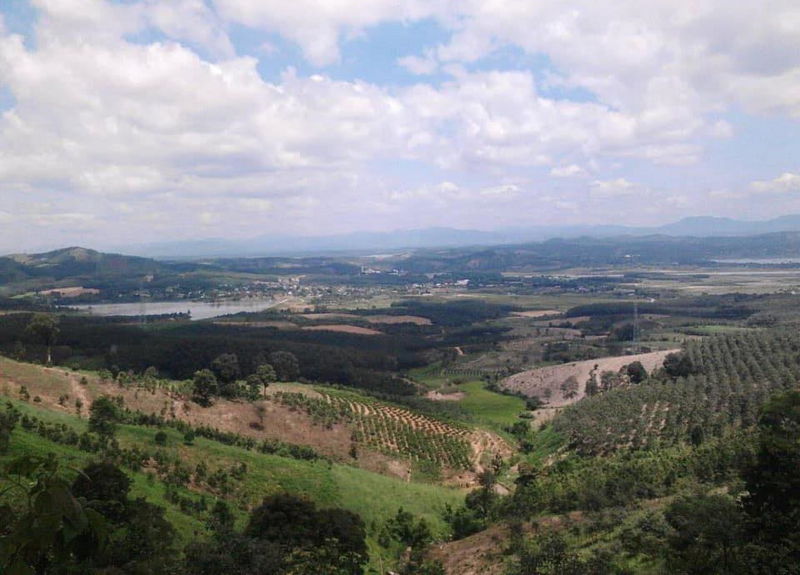LUNG LENG ARCHIOLOGICAL SITE

The story of Lung Leng began at the end of 1999, Mr. Nguyen Ngoc Kim - a shopkeeper in the Lung Leng gold yard worked hard to bring out a cardboard box from the deep forest to sell to the Kon Tum Provincial Museum some of the antiques he collected. bought from gold diggers. Here, when opening the carton, the staff of Kon Tum Museum seemed to explode, because in front of them were more than 300 antiques including shouldered stone axes, string beads, drilled stones, and pieces of decorative pottery. With sharp eyes, people realize that these are all extremely valuable antiques for the archaeology world. The discovery of the Lung Leng site shocked the scientific world at that time.
Right after that, the entire professional staff of Kon Tum Museum quickly cut the forest to find the gold field, more than 3km away from Lung Leng village of the Ja Rai people. Arriving there, people did not seem to believe their eyes when in the middle of the dug-out gold field appeared an ancient cultural layer located about 1km above the ground. On the walls of the gold pits appeared countless pieces of pottery, scattered around, there were also bowls, jars, and pieces of axes,...
The first excavation in September 1999, with only an area of 106m2, unearthed hundreds of stone relics and thousands of ceramic pieces of all kinds. All have signalled the richness of this archaeological site. By the second half of 2001, the site was fully excavated. This is one of the largest archaeological excavations in our country. The whole site has an area of about 15 hectares and is at an elevation of 503 - 509m in the permanently flooded area of the Yaly hydropower reservoir.
Lung Leng excavation results have revealed the secrets of Kon Tum's prehistoric society. Through excavation, it was found that Lung Leng is a site with an intact cultural layer reflecting the development stages from the Old Stone Age to the New Stone Age, to the Metal Age, and even to the Middle Ages. It can be seen that Lung Leng is not only a residence site but also a pottery production site, as well as a burial site. Accordingly, the prehistoric inhabitants here not only attained a high level of stone grinding techniques and made fine tools, but were also very good pottery makers. The prehistoric Kon Tum people had a certain social organization, the economy was mixed, hunting, gathering, making tools, exchanging products with each other, and initially knew how to cultivate as well as metallurgy. In addition, the prehistoric Kon Tum people formed the spiritual world through such things as burying according to burial items, and thinking about odd numbers through relics found in tombs,...
Through here, it can be seen that they settled outdoors into villages, farming, hunter-gatherers, pottery and non-ferrous metal smelting.
At Lung Leng, many kinds of remains from fire stoves, smelters, a burial ground, remains and traces of rice husk plants have been found. It proves that farming appeared very early in the Central Highlands.
Artifacts collected when excavating Lung Leng include stoneware, ceramics, and metal. According to statistics, there are over 23,000 pieces of stoneware, pottery has about 1 million pieces, and iron is very few. The volume of artifacts collected is extremely huge: 14,552 stone artifacts (including from the Late Paleolithic period to the Neolithic to Early Metallic period) including types such as production tools, weapons, and jewellery,... 244 ceramic artifacts of all kinds, millions of large and small ceramic pieces and 37 metal artifacts.
The group of hewn tools is not much, there are some pointed tools, vertical edge cutting tools, short axes and oval shapes. These tools are made of flint, and quartz pebbles and are relatively large in size.
The group of blade sharpening tools, the type of full body sharpening tools, is the dominant group in Lung Leng. Usually pickaxes, quadrangular axes, stone knives and shoulder axes.
The group of metallurgical tools includes stone jewellery with beads, earrings, and bracelets. They are made of hard-grained agate and must be fine-grained or nephrite.
Items include vases, jars, kettles and cups,... some of which are decorated with delicate patterns to create a unique beauty. Due to not mastering the technique, the pottery is coarse and thick, the mouth edge sometimes appears grooved.
Lung Leng is located in a favorable position for the settlement and long-term living of people in the prehistoric era. The climate, hydrology and flora and fauna in the region together with the Krong Poko River have created a suitable environment for humans to live and develop. Lung Leng is an important archaeological site to study the ancient history and culture of the nation.

